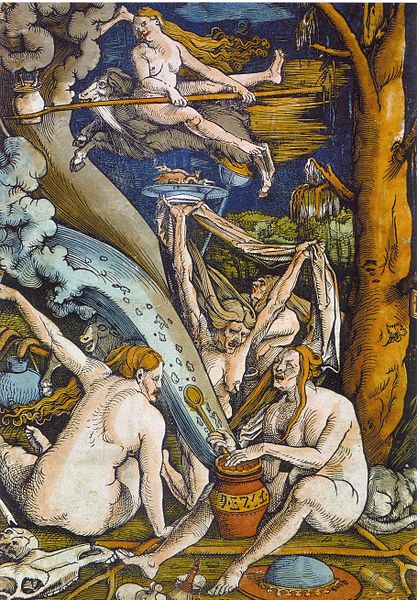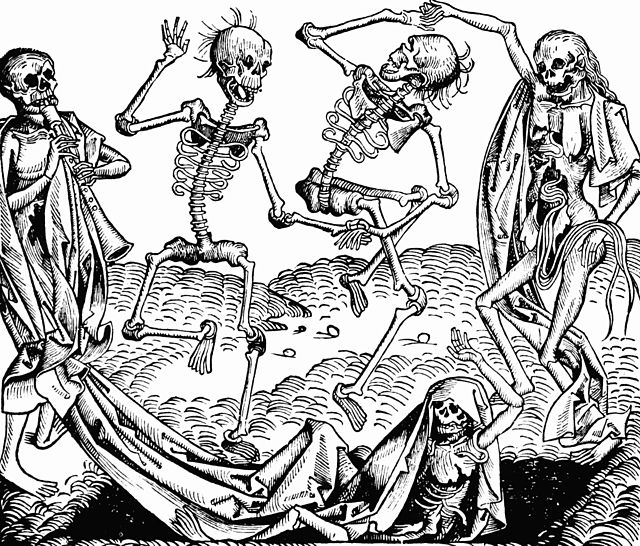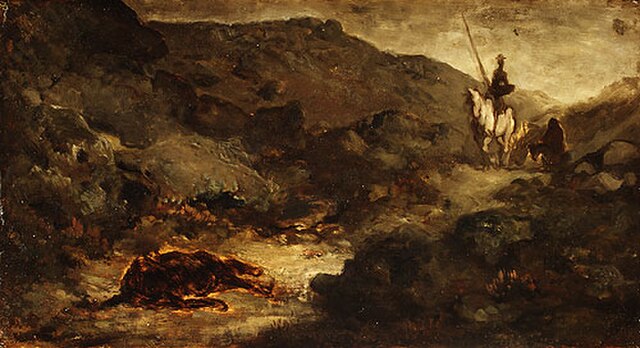Symphonia Domestica, Op. 53, is a tone poem for large orchestra by Richard Strauss. The work is a musical reflection of the secure domestic life so valued by the composer himself and, as such, harmoniously conveys daily events and family life.
Strauss, 1903
Strauss with his wife and son, 1910
Photograph of Strauss taken in New York during his 1904 US tour
A symphonic poem or tone poem is a piece of orchestral music, usually in a single continuous movement, which illustrates or evokes the content of a poem, short story, novel, painting, landscape, or other (non-musical) source. The German term Tondichtung appears to have been first used by the composer Carl Loewe in 1828. The Hungarian composer Franz Liszt first applied the term Symphonische Dichtung to his 13 works in this vein, which commenced in 1848.
Vyšehrad over the Vltava River, evoked musically in the first poem of Smetana's Má vlast.
Hans Baldung Grien, Witches, woodcut, 1508. Mussorgsky's Night on Bald Mountain was meant to evoke a witches' sabbath.
Michael Wolgemut, The Dance of Death (1493) from the Liber chronicarum by Hartmann Schedel, evoked musically in Saint-Saëns' Danse macabre.
Honoré Daumier, Painting of Don Quixote, c. 1855–1865







